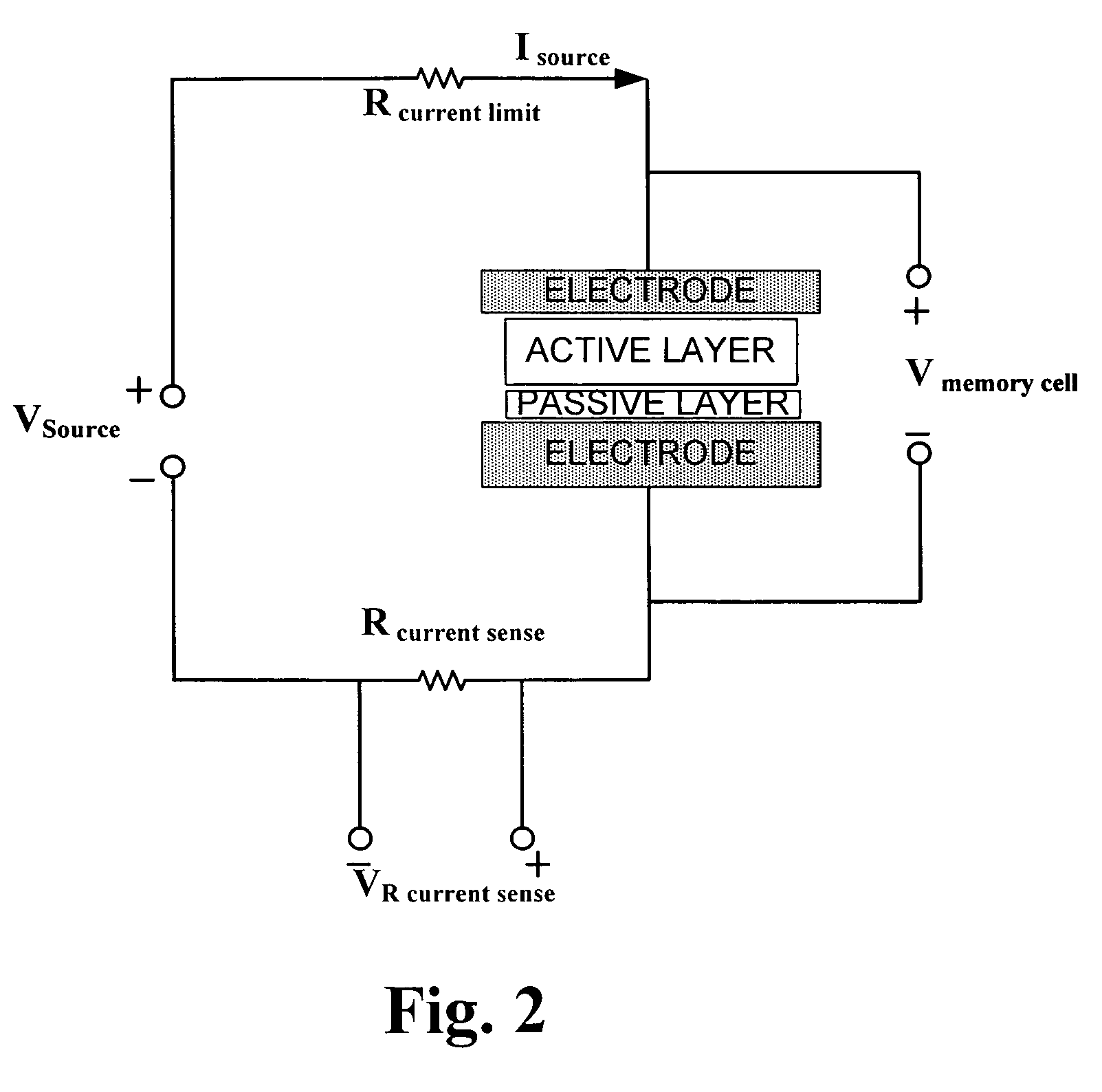Polymer memory cell operation
a polymer memory cell and operation technology, applied in the field can solve the problems of volatile memory devices losing their information, increasing the volume, use and complexity of computers and electronic devices, and increasing the use and complexity of storage devices, so as to improve the viability and speed of memory cell operation, reduce the current drain in the circuit, and improve the effect of stability
- Summary
- Abstract
- Description
- Claims
- Application Information
AI Technical Summary
Benefits of technology
Problems solved by technology
Method used
Image
Examples
Embodiment Construction
[0024]The present invention is now described with reference to the drawings, wherein like reference numerals are used to refer to like elements throughout. In the following description, for purposes of explanation, numerous specific details are set forth in order to provide a thorough understanding of the present invention. It may be evident, however, that the present invention may be practiced without these specific details. In other instances, well-known structures and devices are shown in block diagram form in order to facilitate describing the present invention.
[0025]The present invention provides for methods of activating a polymer memory cell(s) after a production thereof by employing an initialization process. Referring initially to FIGS. 1(a) to 1(c), a schematic diagram of an initialization procedure according to one aspect of the present invention is illustrated. FIG. 1(a) illustrates memory cell 100 after the fabrication stage, with an active layer 102 and a passive layer...
PUM
 Login to View More
Login to View More Abstract
Description
Claims
Application Information
 Login to View More
Login to View More - R&D
- Intellectual Property
- Life Sciences
- Materials
- Tech Scout
- Unparalleled Data Quality
- Higher Quality Content
- 60% Fewer Hallucinations
Browse by: Latest US Patents, China's latest patents, Technical Efficacy Thesaurus, Application Domain, Technology Topic, Popular Technical Reports.
© 2025 PatSnap. All rights reserved.Legal|Privacy policy|Modern Slavery Act Transparency Statement|Sitemap|About US| Contact US: help@patsnap.com



